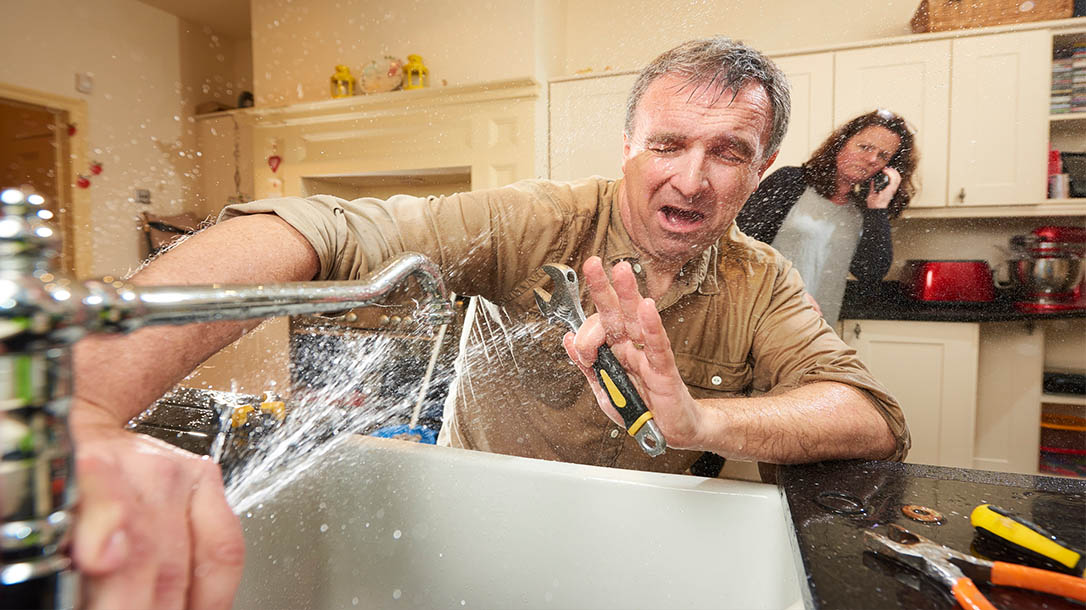What It's Essential to Rectify a Malfunctioning Faucet
What It's Essential to Rectify a Malfunctioning Faucet
Blog Article
Do you find yourself trying to find suggestions concerning How to Fix a Dripping or Leaky Faucet ?

Trickling taps could look like a small aggravation, but their impact exceeds simply the aggravation of the sound. From wasting water to incurring unnecessary monetary expenses and wellness threats, ignoring a dripping faucet can result in different repercussions. In this write-up, we'll explore why it's critical to resolve this usual household issue promptly and efficiently.
Wastage of Water
Environmental Impact
Dripping faucets add dramatically to water wastefulness. According to the Epa (EPA), a solitary tap leaking at one drip per second can squander more than 3,000 gallons of water per year. This not only strains water resources however additionally influences communities and wild animals based on them.
Financial Prices
Enhanced Water Bills
Beyond the ecological impact, trickling taps can inflate water bills considerably. The built up wastefulness in time converts into higher utility expenditures, which might have been prevented with timely repairs.
Potential Home Damage
In addition, extended leaking can result in damage to components and surface areas surrounding the tap. Water buildup can create staining, deterioration, and also structural problems if left unattended, causing extra repair expenses.
Health Problems
Mold and Mold Growth
The consistent existence of dampness from a leaking tap produces a perfect setting for mold and mold development. These fungi not just compromise interior air quality however additionally pose wellness dangers, specifically for individuals with breathing problems or allergies.
Waterborne Illness
Stationary water in leaking taps can become a breeding ground for microorganisms and other microorganisms, raising the threat of waterborne diseases. Pollutants such as Legionella microorganisms thrive in stagnant water, possibly bring about major health problems when consumed or inhaled.
DIY vs. Expert Repair service
Benefits and drawbacks of DIY Repair Work
While some may try to deal with a trickling faucet themselves, DIY repair services feature their very own collection of obstacles. Without correct expertise and devices, do it yourself attempts can intensify the problem or cause insufficient repair services, lengthening the issue.
Advantages of Hiring a Professional Plumber
Employing an expert plumber makes sure that the underlying source of the trickling tap is attended to successfully. Plumbing professionals have the experience and tools to detect and fix tap problems successfully, saving time and minimizing the risk of further damages.
Step-by-Step Overview to Repairing a Dripping Faucet
Devices Called for
Before attempting to take care of a dripping tap, collect the necessary devices, including a flexible wrench, screwdrivers, substitute components (such as washers or cartridges), and plumber's tape.
Typical Faucet Issues and Their Solutions
Identify the kind of tap and the particular concern causing the drip. Common troubles consist of worn-out washers, corroded shutoff seats, or defective O-rings. Describe supplier directions or on the internet tutorials for detailed support on repair services.
Preventive Measures
Regular Upkeep Tips
To avoid dripping taps, do routine upkeep such as cleaning up aerators, inspecting for leakages, and replacing damaged parts promptly. In addition, think about setting up water-saving devices or updating to much more reliable fixtures.
Relevance of Prompt Fixes
Dealing with trickling faucets as quickly as they're discovered protects against more water waste and prospective damages, eventually conserving both water and money in the future.
Influence On Residential Property Value
Understanding of Well-Maintained Property
Preserving a residential or commercial property in good condition, consisting of dealing with upkeep concerns like dripping taps, boosts its perceived worth and worth among prospective customers or tenants.
Influence on Resale Worth
Properties with well-kept plumbing components, consisting of faucets, command higher resale worths in the property market. Addressing leaking taps can contribute to a positive impact during home examinations and negotiations.
Environmental Responsibility
Individual Contribution to Conservation
Taking obligation for taking care of trickling faucets aligns with broader efforts toward water conservation and environmental sustainability. Every individual's actions collectively make a considerable impact on protecting priceless sources.
Lasting Living Practices
By focusing on timely repair services and taking on water-saving behaviors, people contribute to sustainable living methods that benefit both present and future generations.
Conclusion
Addressing a dripping tap surpasses simple benefit; it's a vital action toward conserving water, reducing economic prices, and securing health and wellness and home. Whether with DIY repairs or professional aid, doing something about it to repair dripping taps is a little yet impactful way to advertise liable stewardship of resources and add to a much healthier, a lot more sustainable future.
Most Common Reasons for a Leaky Faucet and How to Stop the Drip
Whether it’s your kitchen faucet leaking or a bathroom faucet leaking, one leaky faucet can waste anywhere from three to 30 gallons of water every single day. If the constant drip-drip-drip doesn’t get your attention, your water bill will. The good news is that, by following a few simple steps, chances are pretty good you can fix the problem yourself.
Why is it dripping?
Before you start taking things apart, let’s break down some of the most common causes of a leaky faucet.
Bad O-ring.
A cartridge is a valve that controls the flow of water into the faucet spout. On cartridge faucets there’s an O-ring—the little disc attached to the stem screw that holds the faucet handle in place. If it’s loose or worn-out, it can cause your sink handle to leak. Of course, the cartridge itself could be worn out. If that’s the case, make sure you replace it with the exact same kind.
Corroded valve seat.
The valve seat connects the faucet and the spout. If the leak seems to be coming from the spout, it might be because a buildup of water sediment has corroded the valve seat.
Worn-out washers or seals.
A leaky spout could be caused by a bad washer that rests against the valve seat. It’s just a matter of time before friction takes its toll. It could also be the wrong size washer or one that’s been installed incorrectly. Water sediments can also corrode inlet and outlet seals.
Water pressure.
If the faucet only drips now and then, or when you turn the handles a certain way, you should probably check your home’s water pressure.
Loose or broken parts.
The adjusting ring and packing nuts in the stream screw can become loose over time, causing your sink handle to leak. Try tightening or replacing the packing nut. If the leak is coming from the pipes underneath the sink, you probably have a broken pipe or fitting. If that’s the case, you should definitely call a plumber.
Know your faucet.
Faucets come in a variety of types. Each one has its own assembly—and its own possible causes of leaks. Learning about the four most common kinds of faucets will help you know how to take them apart and make any repairs.
How to stop a leaky faucet
Fixing that leaky faucet doesn’t have to take a lot of time, money, or expertise. It’s usually a simple matter of replacing a worn-out washer or gasket, a loose O ring, or another part. Chances are really good you can do this yourself if you follow these simple steps.
Shut off the water.
Before you tackle the faucet, cut off the water supply to the sink. There should be one valve for hot and one for cold. Hand-turn them clockwise with your hands till they close. If there are no valves under the sink, head to the basement and shut off the main water supply to the house. Then turn on the faucet until it empties out the water that’s still in the line and you’re ready to start. It’s a good idea to cover the sink drain with a plug or a rag so you don’t lose any small pieces and parts while you’re working.

Do you appreciate reading up on ? Place a comment further down. We'd be happy to find out your insights about this review. Hoping that you come back again in the near future. Sharing is good. Helping people is fun. I take joy in your readership.
Report this page